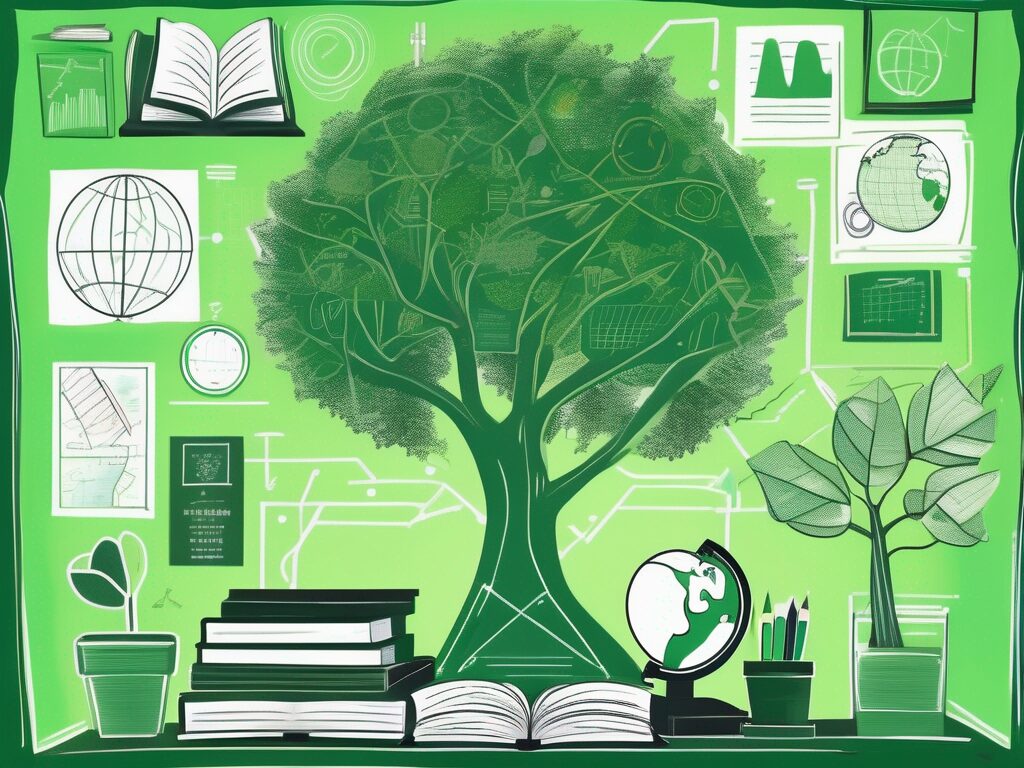As the world becomes increasingly aware of the environmental challenges we face, the concept of green teaching is gaining traction. This approach to education focuses on sustainability and environmental responsibility, and it’s particularly relevant in Hong Kong, a city grappling with significant environmental issues. If you’re a teacher in HK with a Postgraduate Certificate in Education (PGCE), here are six crucial tips to help you master the art of green teaching.
1. Incorporate Environmental Themes into Your Curriculum
Make Sustainability a Core Topic
One of the most effective ways to promote green teaching is to weave environmental themes into your curriculum. This doesn’t mean you need to overhaul your entire teaching plan. Instead, look for opportunities to introduce discussions about sustainability and the environment into your existing subjects. For example, in a maths lesson, you could use statistics related to climate change to teach students about data analysis.
Use Real-World Examples
Real-world examples can make environmental issues more tangible and relatable for students. Discussing local environmental challenges, such as air pollution in Hong Kong, can help students understand the direct impact of these issues on their lives. This approach not only enhances their learning experience but also fosters a sense of responsibility towards their environment.
2. Foster a Green Classroom Environment
Reduce, Reuse, Recycle
Adopt the three R’s of sustainability – reduce, reuse, recycle – in your classroom. Encourage students to minimise waste, reuse materials where possible, and recycle what they can’t reuse. This can be as simple as setting up recycling bins in the classroom or as involved as organising a class project to create art from recycled materials.
Go Digital
Embrace digital technology to reduce paper waste. Use online platforms for assignments and communication, and encourage students to use digital notebooks. While it’s true that digital technology has its own environmental footprint, it’s generally less than that of paper production, particularly when you consider the deforestation involved.
3. Encourage Outdoor Learning
Take Lessons Outside
Outdoor learning is a fantastic way to immerse students in the environment while teaching them about it. Whether it’s a biology lesson in a local park or a geography field trip to a nearby mountain, outdoor learning experiences can make environmental education more engaging and memorable.
Promote Physical Activity
Outdoor learning also provides an opportunity to promote physical activity, which is beneficial for students’ health and well-being. Plus, walking or cycling to local outdoor learning locations can help reduce carbon emissions associated with transport, reinforcing the environmental lessons you’re teaching.
4. Involve the Whole School Community
Engage Parents and Carers
Parents and carers play a crucial role in reinforcing the environmental lessons students learn at school. Keep them informed about your green teaching initiatives and provide suggestions for how they can support these at home. This could involve encouraging recycling, reducing energy consumption, or even growing their own vegetables.
Collaborate with Colleagues
Green teaching shouldn’t be confined to one classroom. Collaborate with your colleagues to promote environmental responsibility across the whole school. This could involve organising school-wide environmental projects, such as a tree-planting day, or sharing resources and ideas for incorporating environmental themes into different subjects.
5. Stay Informed About Environmental Issues
Keep Up-to-Date
Environmental science is a rapidly evolving field. Stay informed about the latest research and developments so you can provide your students with accurate, up-to-date information. This might involve subscribing to environmental news feeds, attending relevant professional development courses, or joining online communities of green teachers.
Understand Local Issues
While global environmental issues are important, understanding the local context is crucial for green teaching in Hong Kong. Familiarise yourself with the environmental challenges facing HK and the efforts being made to address them. This will enable you to make your lessons more relevant and engaging for your students.
6. Reflect on Your Own Practices
Model Sustainable Behaviour
As a teacher, you’re a role model for your students. Reflect on your own practices and strive to model sustainable behaviour. This might involve using a reusable water bottle, cycling to work, or bringing your own lunch in a reusable container. These actions can have a significant impact, particularly when they’re noticed by students.
Continually Improve
Green teaching is a journey, not a destination. Continually reflect on your practices and look for ways to improve. Seek feedback from students, parents, and colleagues, and be open to trying new approaches. Remember, every little bit helps when it comes to protecting our planet.
Mastering the art of green teaching in HK with a PGCE is not just about teaching students about the environment. It’s about fostering a culture of sustainability and environmental responsibility that extends beyond the classroom. By incorporating these six tips into your teaching practice, you can help shape the next generation of environmental stewards.
Advance Your Green Teaching Career with The IQTS at UWE
Are you inspired to take your green teaching to the next level? Join the International Qualified Teacher Status (iQTS) programme at The IQTS at UWE and transform your passion for sustainability into a thriving international career. With our Level 7 qualification, you’ll overcome the common barriers of strict qualification requirements, enhance your career progression with a significant increase in promotion rates and salary, connect with a global network of professionals, and gain a deep understanding of international curricula. Embrace the flexibility of online study and make a real impact on the future of education. Make Your Next Step towards a greener teaching journey today!

